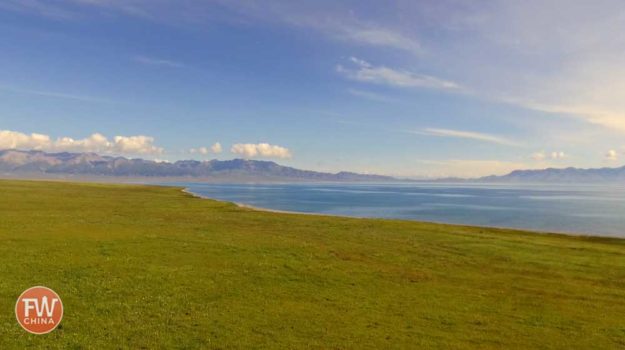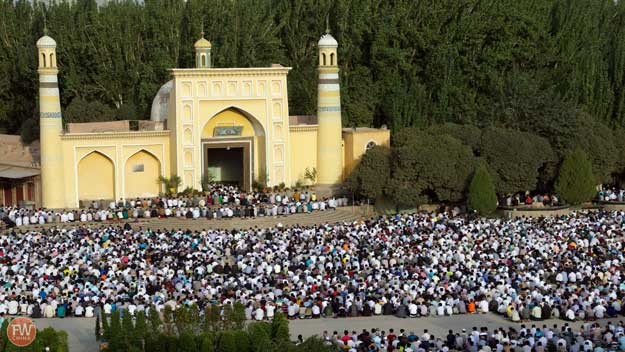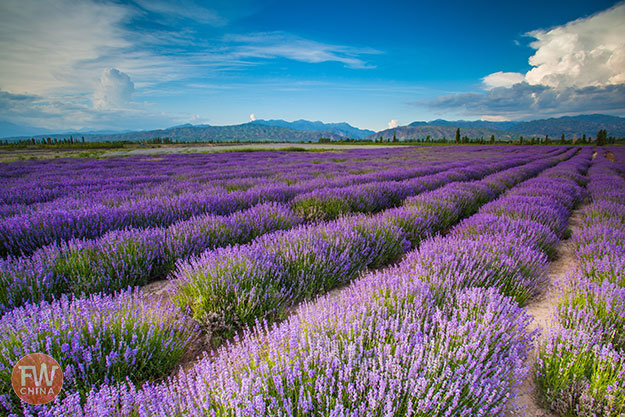25 Unbelievably Stunning Xinjiang Photos
There is no doubt in mind that Xinjiang offers not only the most beautiful scenery in all of China, but also the most diverse. Considering that Xinjiang is the largest region in China, the ecological diversity should really come as no surprise. Indeed, as these 25 gorgeous Xinjiang photos prove, this place is unbelievable.
Most people are attracted to this area based on the peoples and the cultures represented, such as the Uyghur, Hui, Kazah, and more. Xinjiang will not disappoint in that regard.
However, many travelers I know leave this place amazed by the natural beauty they witnessed, something they weren’t quite expecting.
It’s a fun hobby of mine to both edit my own photos (see my photo essay on Urumqi) as well as find Xinjiang photos from other great photographers on places like Instagram (incidentally, Instagram is now blocked in China).
I’ve decided to compile 25 of my favorite Xinjiang photos for you to enjoy here.
If this doesn’t inspire you to buy a great travel camera before you come to Xinjiang, I don’t know what will!
Serene Lakes | Xinjiang Photos
Considering all the famous desert scenery and Xinjiang’s record-breaking distance from any major body of water, it may come as a surprise to many that some of the most spectacular Xinjiang scenery come from Xinjiang’s most famous lakes.
Here are a few of my favorite lakes.
Sayram Lake (赛里木湖) near Yili

About an hour northeast of the Xinjiang town of Yili (aka Yining or Ghulja) you’ll find the beautiful Sayram Lake – the largest and highest alpine lake in Xinjiang.
Given its proximity to Kazakhstan, you’re bound to run into quite a few Kazakh men riding their horses or trying to get you to stay in their yurt for a night.
Heavenly Lake (新疆天池) near Urumqi

The beautiful Heavenly Lake has become the “go to” place to visit from the Xinjiang capital of Urumqi.
It’s become somewhat touristy over the past few years but the views are still amazing. If you have an extra day in Urumqi, it’s not a bad idea to make a quick visit to Heavenly Lake.
Karakul Lake (喀拉库勒湖) along the KKH

Along China’s Karakoram Highway between Kashgar and Tashkorgan you’ll run into the pristine Karakul Lake. It’s not a particularly large lake, but it is picturesque, especially with the majestic Muztaghata mountain in the background.
In the picture above, which was taken quite a few years ago, my group set up tent next to the lake.
Unfortunately, this is no longer allowed.
Kanas Lake (喀纳斯湖) in Northern Xinjiang

Although technically a river, Kanas has been called a lake for so long that it’s not worth trying to reclassify it. The view you see here is probably one of the most famous in all of Xinjiang.
It doesn’t matter what season of the year, this bend in the river of Kanas Lake is a small piece of heaven on earth in northern Xinjiang.
Swan Lake (巴音布拉克湖 / 天鹅湖) near Bayinbulak

Swan Lake is actually a wetland swamp inside of the Bayinbulak Grasslands in central Xinjiang. It’s comprised of many small lakes, made famous by the numerous swans who call it home during the summer.
Although it’s great to see the swans, the streams snaking through the grassland have become the trademark scenery here.
Majestic Mountains | Xinjiang Photos
Even in the photos above you can see that mountains play a prominent role in Xinjiang’s landscape.
Multiple mountain ranges cut through or border Xinjiang including the TianShan, Kunlun and Pamir among others.
TianShan Range (新疆天山) of Central Xinjiang

When flying in and out of Urumqi, it’s the TianShan range that you’ll see out your window. The Tian Shan, which slices through the middle of Xinjiang, was named to UNESCO’s World Heritage List in 2013.
I took this particular photo during one of my favorite Xinjiang road trips (link includes awesome video of the trip!).
Pamir Mountains (帕米尔) of West Xinjiang

The Pamir Mountains, located on the western edge of Xinjiang near the Silk Road town of Kashgar, are a stunning backdrop to places like Tashkorgan’s Stone Fort, which you see above.
I enjoyed taking photos during sunrise here during my most recent trip to Tashkorgan.
Altay Mountains (阿勒泰山脉) of North Xinjiang

Northern Xinjiang, which is home to the Kanas Lake mentioned earlier, also shares the Altay Mountains with neighbors like Kazakhstan and Russia.
According to legend, it’s in these mountains that snow skiing was first invented.
Kunlun Mountains (昆仑山) of Xinjiang

The Kunlun Mountains are the range that runs the border between Xinjiang and Tibet.
You’re likely to see this range if you ever have the chance to travel the Tibet-Xinjiang highway, the highest paved road in the world.
Flaming Mountains (火焰山) of Turpan

Barely high enough to be classified a “hill”, Turpan’s Flaming Mountains are still impressive none-the-less for their unique display of color and design. If you’re brave enough, there’s even a marathon that traverses these “mountains” in the Turpan oasis.
The Flaming Mountains are one of those things you’ll see as you explore everything else there is to do in Turpan.
Unique Landforms | Xinjiang Photos
These strange places in Xinjiang defy classification.
Truthfully, photos don’t really do them justice but it’s worth a try anyway :)
Xinjiang’s “Grand Canyon” (天山大峡谷) near Kuqa

One of the most beautiful, little-known places to visit near Kuqa is the Xinjiang Grand Canyon, also known as the Keziliya Grand Canyon.
5 Colored Hills (五彩滩) of Buerjin

The Five Colored Hills, sometimes referred to as “Rainbow Beach” is an amazing combination of color and landscape that comes alive at dawn and dusk.
Located in between Karamay and Altay in the northern part of Xinjiang, it would be easy to pass by this place unless you were looking for it. Check out the FarWestChina guide to the Five Colored Hills here.
Karamay Ghost City (魔鬼城)

So named because of the sounds the wind makes when passing through these landforms, Karamay’s Ghost City is a collection of what is known as “Yardang” formed by wind erosion.
Ghost City’s claim to fame is that scenes from the well-known Crouching Tiger, Hidden Dragon movie were filmed here (among many other, lesser-known Chinese films). Read more about Karamay’s Ghost City here.
Koktokay (可可托海) in Altay

Located in the Altay region in northern Xinjiang, Koktokay National Park (often transliterated from Mandarin as “Keketuohai”) offers some interesting rock formations similar to what you might find at Yosemite Park in the United States.
The rock pictured here, named “The God Rock”, is a prominent feature in an all-around gorgeous park.
Famous Landmarks | Xinjiang Photos
There are plenty of great places to visit here in Xinjiang but there are only a few truly iconic landmarks that seem to represent the region as a whole.
These places are for the most part man-made, whether in the recent past or in ancient times.
Kashgar’s Old Town (喀什古城)

Once a centerpiece of ancient Silk Road life, Kashgar’s Old City has undergone a lot of change over the past 5 years.
After plans to raze the Old Town were publicized back in 2009, international outcry did little to thwart China’s plan to demolish all of the old city and rebuild it from scratch.
Even the location of the photo above sadly no longer exists.
Turpan’s Emin Minaret (苏公塔)

Although historically insignificant, the Emin Minaret in Turpan has become a tourist favorite over the years. The Uyghur brickwork on the minaret is amazing and it’s a fun place to tour.
Oddly enough, half of the adjoining mosque decided to collapse a few years ago, but it’s since been rebuilt.
Kizil Thousand Buddhist Caves (克孜尔千佛洞)

Covering a 2 kilometer stretch of cliff, these 236 caves make the Kizil Thousand Buddha Caves the largest collection of caves in the Kuqa area (there are other, less popular caves nearby). Like almost every other cave you’ll see in Xinjiang, this too was “raided and pillaged” by explorers in the early 1900’s.
Although it’s a small town, these caves are just one of a few fascinating places to visit in and around Kuqa.
Kashgar’s Id Kah Mosque (艾提尕尔)

Very few buildings represent a region quite like the Id Kah Mosque represents Xinjiang and, specifically, Kashgar. The yellow tiles are almost as memorable as the massive courtyard inside.
Aside from the Kashgar Sunday Bazaar, this building is one of the best places to see hoards of people together in one place. Tens of thousands of Uyghur men descend on Kashgar’s Id Kah Mosque to pray and if you’ve never seen it…it’s an unbelievable sight.
Turpan’s Jiaohe Ancient City (交河故城)

If the aforementioned Emin Minaret is the most iconic building in Turpan, then the Jiaohe Ancient Ruins are the most interesting.
These ruins offer a chance to walk through history, imagining busy streets, mud-brick homes and massive temples with relatively well-preserved ruins. Read more about visiting Turpan’s Jiaohe Ruins.
Urumqi’s Grand Bazaar (大把杂)

Although you’ve probably seen pictures of this minaret here in Urumqi, most people don’t realize that the Urumqi International Grand Bazaar is actually quite new…as in built in mid 2000’s!
Visiting the Urumqi Grand Bazaar is still fun, though, and it’s possible to go to the top of the minaret to get a bird’s-eye view of the city.
Seasonal Spectacles | Xinjiang Photos
Most of what has already been mentioned is worth visiting year round. There are a few places, however, whose beauty can only really be appreciated at certain times of the year.
These seasonal views sometimes last a couple weeks and sometimes last only a couple days.
Spring – Narat Grasslands (那拉提)

Perhaps the idea of large tracks of land covered in grass sound boring, but the gentle rolling terrain mixed with gorgeous flowers extending as far as the eye can see is breathtaking.
The Narat Grasslands (known in Chinese as “Nalati”) are an excellent place to enjoy the new blossoms of spring.
Summer – Huocheng Lavender Fields (霍城)

The Yili region of Xinjiang has become known for their production of lavender – they claim to produce 95% of China’s lavender sub-products.
During the summer months these fields of lavender clothe the region in a royal purple that is stunning.
Autumn – Xinjiang Poplar Forrest

Xinjiang’s Tarim basin is home to one of the world’s only Poplar Forrest Natural Reserves.
These trees, which are often described as “living fossils”, look gnarly and twisted and turn a colorful yellow and orange during the autumn months.
Winter – Hemu Village (禾木)

Just west of Kanas Lake in northern Xinjiang’s Altay region you’ll find the picturesque Hemu Village.
Although it’s really a great place to visit any time of the year, there’s something special about winter in this Xinjiang location.
Final Thoughts | Beautiful Xinjiang Photos
And that’s a wrap on this collection of gorgeous Xinjiang photos!
On one hand, it’s amazing the breadth of natural beauty that can be found in Xinjiang. On the other hand, considering the incredible size of the region, it’s not all that surprising.
Remember, if you’re traveling to Xinjiang and you’re hoping to see any of these beautiful places, the best resource to help you plan for the trip is the FarWestChina Xinjiang travel guide.
Not only is it the most comprehensive guide on the market, it also comes with access to a private group of over a thousand Xinjiang travelers who can answer any pressing questions you might have.
Grab a copy and enjoy planning an epic trip to Xinjiang!














